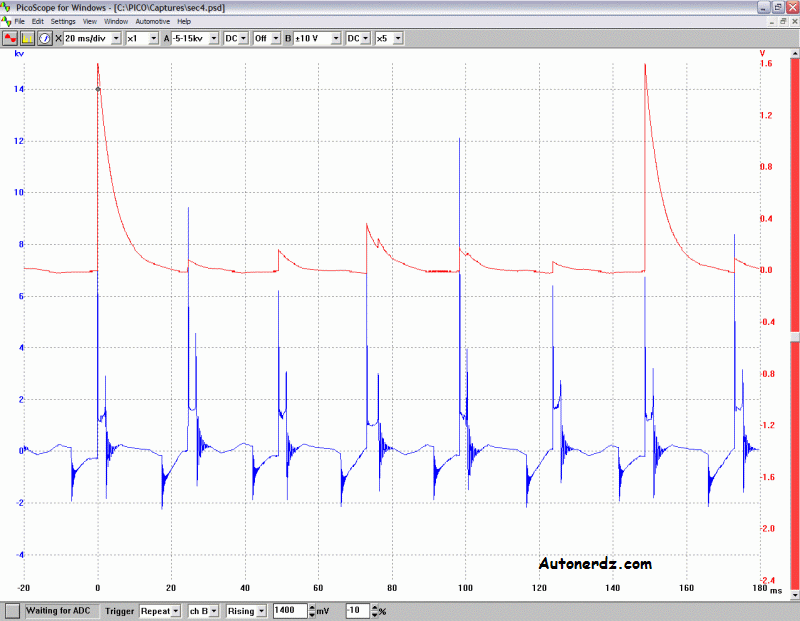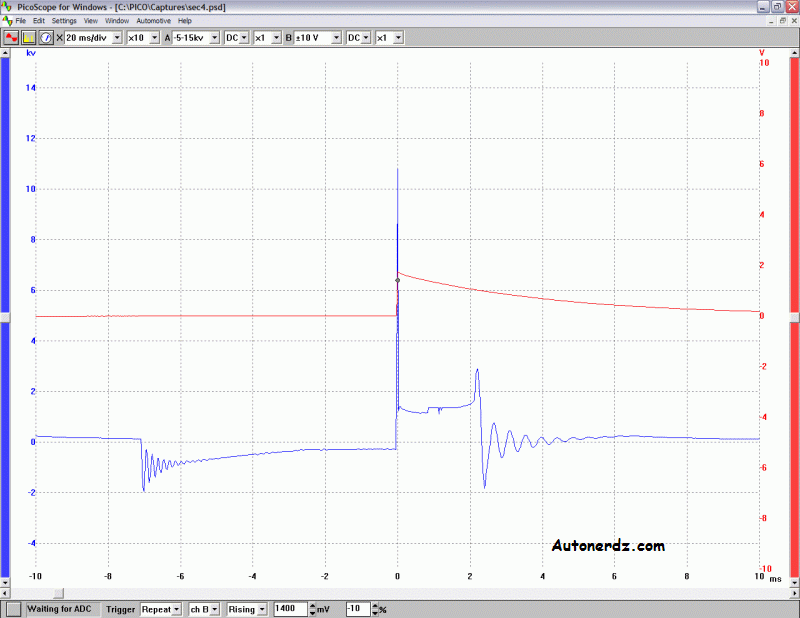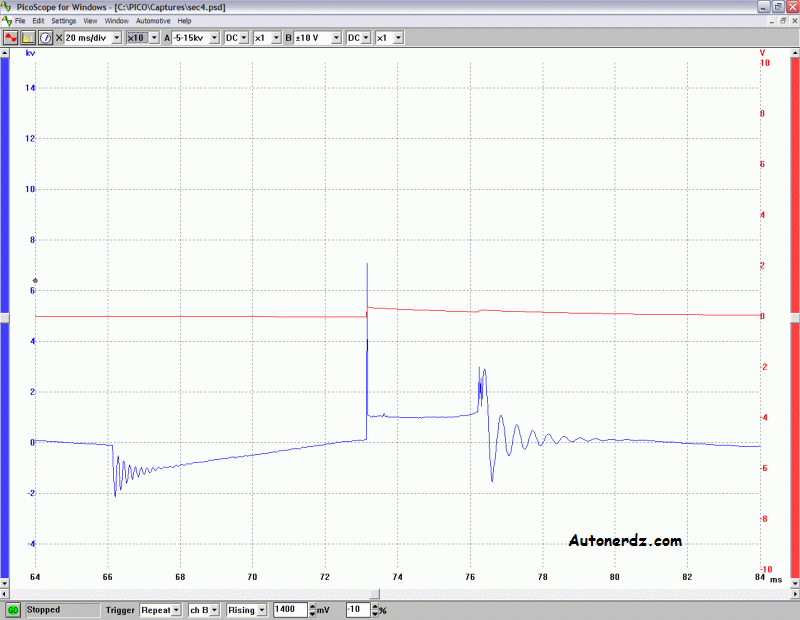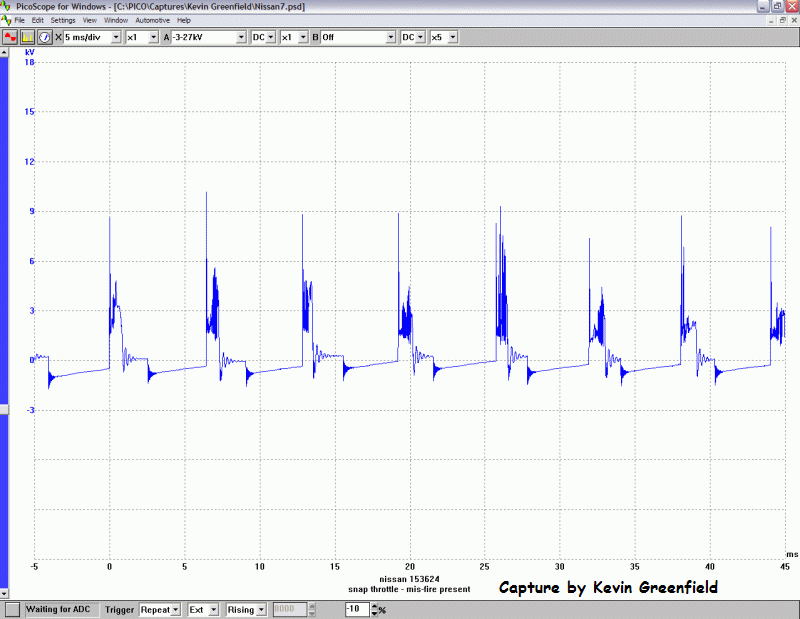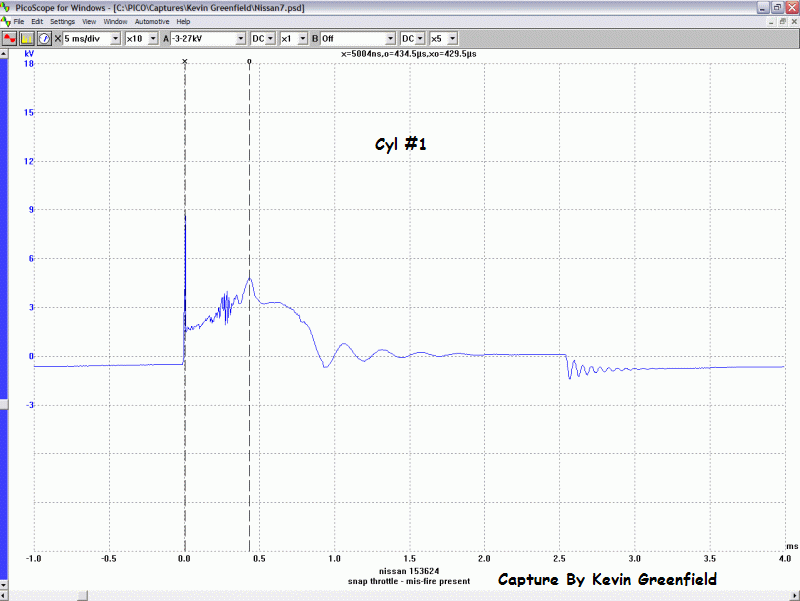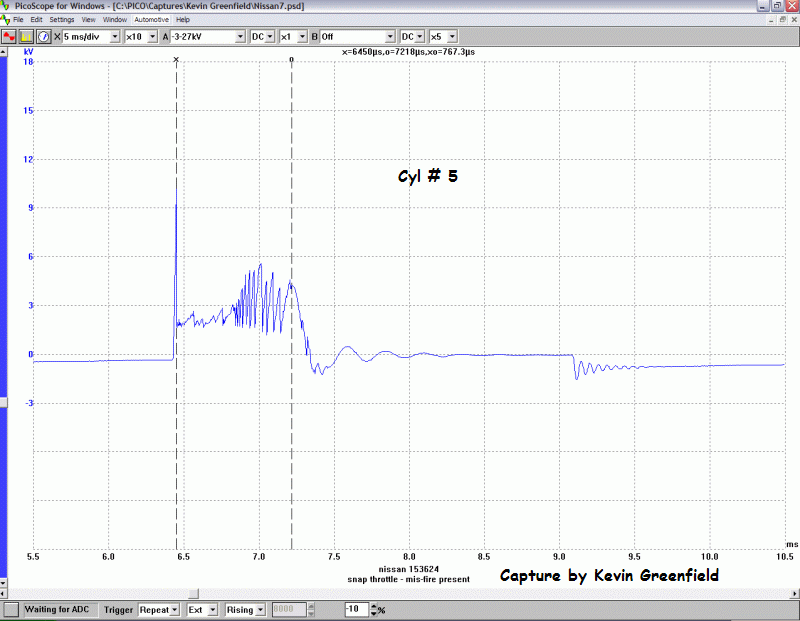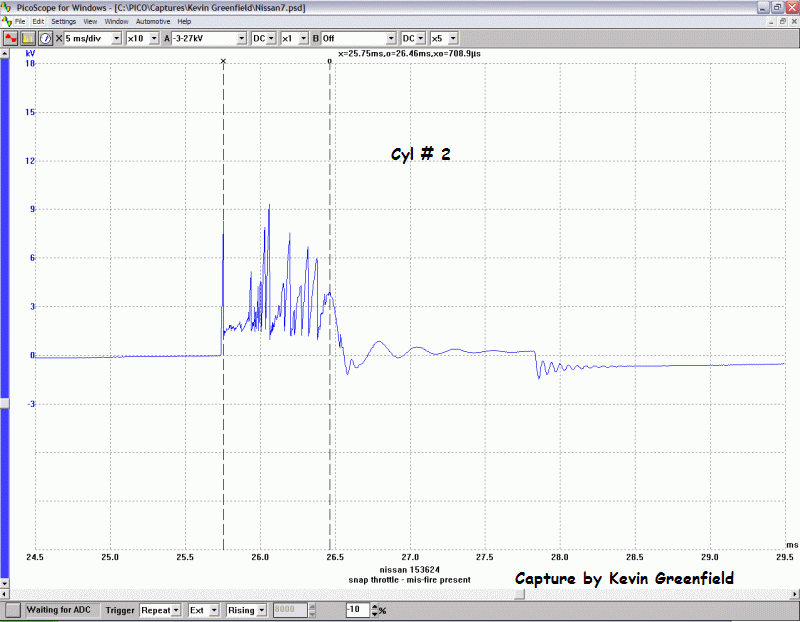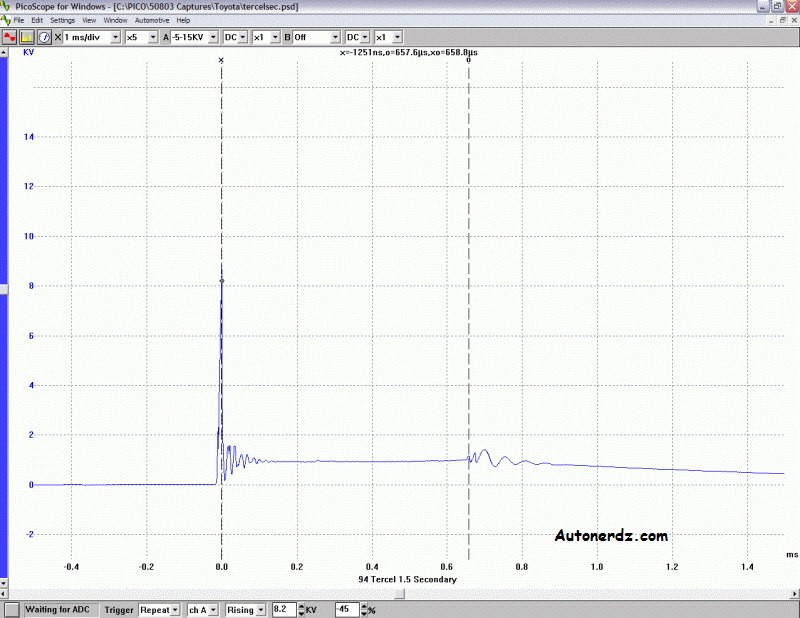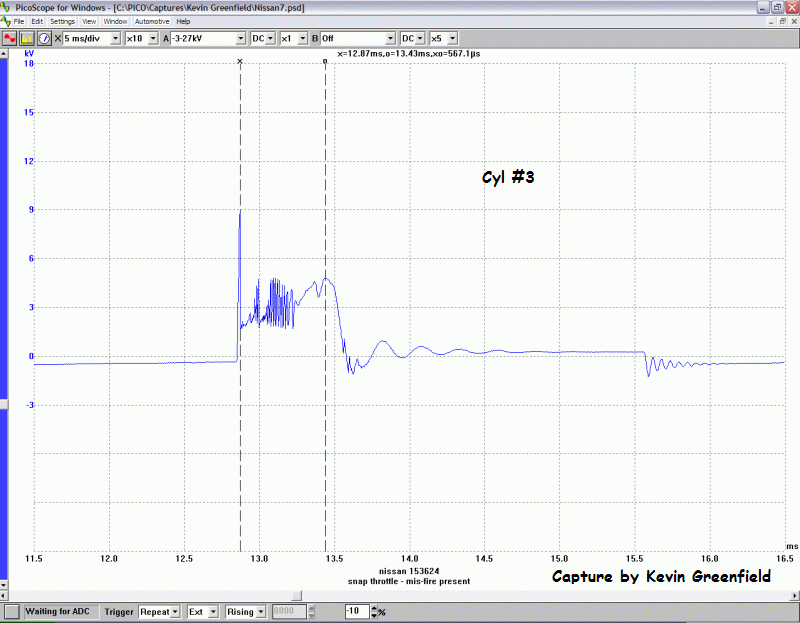Post by Tom Roberts on Feb 26th, 2004 at 7:27am
Hi Kevin,
If you email me some psd files of your captures, I can take a look at your settings and see what you are seeing. Might be able to offer some suggestions.
Mac's COP III works fine with the Pico. It's only attenuated 10:1 though, so you won't see the full primary spike. The primary spike has no real diagnostic value anyway, so it's not a big loss. ;)
Here is a capture of a 3.0 Chrysler firing order 123456. Channel B (top) is an RPM 80 inductive clamp on #1 wire. Channel A is coil wire secondary parade. One of the disrtibutor towers has a grounded test light in it instead of the plug wire. The game is to identify which one.
Triggering this way divides the sample rate in half on the 212/3 because we are using both channels. A good altenative is to use the inductive clamp with the external trigger and then using only one channel. This gives full sampling to the secondary capture, while still triggering off #1. You cannot use the capacitive secondary pickup on the external trigger though because the ext trigger is a fixed 1-2V pos trigger. The secondary is a negative spike so the ext trigger won't see it. :P
If you email me some psd files of your captures, I can take a look at your settings and see what you are seeing. Might be able to offer some suggestions.
Mac's COP III works fine with the Pico. It's only attenuated 10:1 though, so you won't see the full primary spike. The primary spike has no real diagnostic value anyway, so it's not a big loss. ;)
Here is a capture of a 3.0 Chrysler firing order 123456. Channel B (top) is an RPM 80 inductive clamp on #1 wire. Channel A is coil wire secondary parade. One of the disrtibutor towers has a grounded test light in it instead of the plug wire. The game is to identify which one.
Triggering this way divides the sample rate in half on the 212/3 because we are using both channels. A good altenative is to use the inductive clamp with the external trigger and then using only one channel. This gives full sampling to the secondary capture, while still triggering off #1. You cannot use the capacitive secondary pickup on the external trigger though because the ext trigger is a fixed 1-2V pos trigger. The secondary is a negative spike so the ext trigger won't see it. :P
